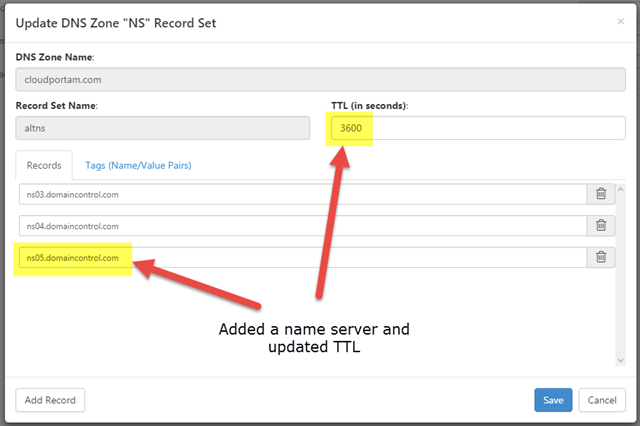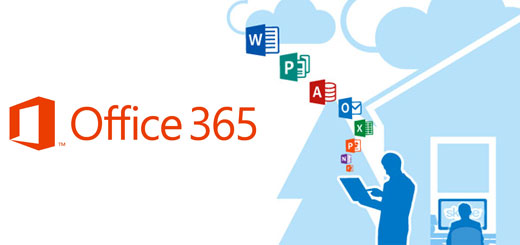Most of the webmasters would consider changing their websites host at some or the other point. It is known fact that, web hosting and the location of the server can affect the SEO rankings of a website. Accordingly, despite the fact that changing to another web host is not as risky as changing your Domain name, it must be performed with care. Today, in this article we will talk about what are the most occurring risks due to switching of web hosts, how to change your website’s host without affecting your SEO rankings.
Here we go with few important tips,
- Choose a web hosting company that best matches your needs.
Finding a best web hosting company that completely satisfies your requirements is not an easy task. This is because ensuring that the new host has all the essential features or options that are required to show your site appropriately, is one of the most essential and important steps. Even though, the process of finding a best web hosting service provider is beyond the scope of this article, you must pay attention to the following points.

This is what you have to search for in a best web host:
Right Operating System – It’s very important that you adhere to the OS of your present host. On the off chance that you have a basic HTML site, then it doesn’t make a difference what OS the web host service provider runs. Mind the Operating System of the server and the upheld web technology. Do you require a Windows or a Linux server? Is your site coded in PHP, JSP, ASP or ASP.NET? What DB do you require? Ensure that the new host is good with the specialized requirements of your site.
Great Technical Support – Look for a web host provider who offers live talk, phone and email specialized backing. Most trustworthy hosting providers have these support features.
Disk Space – Get to know whether the host provider has enough disk space for the site you’re moving over. Verify the available bandwidth capacity of the selected web hosting pack, the various services and limitations and the physical attributes of the server. These attributes are typically publicized by the hosting organizations. The hosting companies would never reveal how many websites are being hosted in the meantime on each server.
Data Transfer – Check whether you have enough data transfer to suit your current site. Check your current hosting insights to make sense of this.
Databases – You’re going to need to pay consideration on the kind of database you’re utilizing. By and large, MS SQL databases are one of a kind to Windows-based web hosting and My SQL databases are interesting to Linux-based web hosting providers.
Scripting – If you’re utilizing extraordinary scripting languages, for example, PHP, CGI, Perl or ASP, ensure the web host providers underpins them else you might find that your site won’t work after all the work that has been done to move.
Execution and Reliability – Pick a host that pays consideration on execution and unwavering quality. There is no sense in trying to move in case you’re just going to move once more. Ensure you pick a hosting company that is known for its quality services and stay away from the modest solutions. Generally, the cheap web hosting packs pull in spammers and you certainly would prefer not to be hosted on the same server with them. Note that Search Engines can boycott specific IP addresses for overabundance spamming and this would contrarily influence your SEO campaign.
Versatility – Go with a host that has the alternative to scale up or down with their administrations. It’s much less demanding to climb inside of an organization versus exchanging suppliers. Odds are that when you redesign with the supplier you’re with, they’ll give the movement to free.
Free Site Migration – Find a web host that offers free website migration.
cPanel/WHM – You need to figure out if you’re utilizing a cPanel/WHM web host as this will significantly ease transferring a site to another cPanel-based web hosting provider.
Related article: How to choose the best web hosting for your needs
- Choose the location of the Server precisely
The location area of the server (the country) is utilized as a GEO location signal by most internet searchers. Accordingly if the server of the new hosting company is situated in some other country than the one of the old host, this may affect your website rankings. Generally the best decision is to have your site to a server that is situated on the same nation as the one of your intended interest group. Numerous major web hosting companies offer you the opportunity to choose the area of the server, so ensure you consider this additionally while purchasing your hosting pack.

- Transfer the site on the new host and test it
The most ideal approach to guarantee that the new web host is good with your site is to test it first. Continuously ensure that the site works regularly before you continue to the transfer. This should be possible by transferring your database and documents on the new host and by testing its functionalities by means of an impermanent URL (checking it with the IP, setting it up on a sub domain, or utilizing a temp space).
- Update the TTL (Time-To-Live) of your DNS records
Before we clarify the procedure of changing the DNS records, how about we quickly give an improved clarification of what DNS is. The DNS remains for Domain Name System and it is a service that maps the domain names to their IP addresses. The IP locations are the system locations of the servers that host your site. So it might be said, the DNS is a service which helps us discover which server has the site example.com. When we switch to another web hosting company, we fundamentally exchange our site from the old server with IP A to the new server with IP B. Therefore, so as to finish the switching of a site we have to upgrade the DNS records and tell the world that the IP location of example.com has changed.

At times, the DNS record update can take over 24 hours to end up unmistakable all inclusive. This is because that the DNS records are reserved for a specific timeframe (otherwise called TTL or Time-To-Live) keeping in mind the end goal to abstain from creating a ton of abundance burden on the frameworks. Accordingly on the off chance that you change your DNS records today, you will see that 23 hours after the fact, huge numbers of your guests will keep getting to your site by means of the old server. This is fine if your site is static; however it is not if your guests post content on your website or if their collaborations upgrade your database (gathering, blog, ecommerce webpage and so on).
A decent approach to accelerate the DNS for long time procedure is to change the estimation of the TTL from 24 hours (86400 seconds) to 5 minutes (300 seconds). On the off chance that you do this 1 day before you really exchange your site, you will guarantee that once you upgrade the DNS records, your guests are going to get to straightforwardly the site which is situated on the new server. Lamentably some space enlistment centers don’t offer this alternative on their boards and subsequently the TTL esteem can’t be changed.
On the off chance that you are not ready to overhaul your TTL, then you might need to alter the design of the old site and change the Database server location to the new one. This change is exceptionally useful if your site is a gathering and you need to abstain from losing content amid the move. In the event that nothing unless there are other options is conceivable, then you most likely have no other choice than hold up until the DNS records are completely redesigned. Note that regardless of the possibility that this stride is discretionary, it is likewise exceedingly prescribed by and large.
- Change your DNS records
As we said on the above point, with a specific end goal to get done with the transfer you have to upgrade the DNS records and guide them toward the new site. Contingent upon how your new web hosting functions you may need to redesign the NameServer accounts or the A Records. In addition remember to change back the TTL time from 5 minutes to 24 hours.

The exact opposite thing that I might want to push, regardless of the possibility that it is not identified with SEO, is that in the event that you change the DNS records of your domain, this will likewise influence your emails. So if you don’t keep up the mails on your past host by setting up MX records, then you should make a point to set up the email accounts with your new facilitating organization before you change your DNS records.
- Check everything finally Before Making the Move
Final check whether everything is working on your site or not, once you are done with loading your documents onto the new hosting.
Of note, you can see your recently hosted site utilizing a brief URL as a part of IP numbers. Some hosting organizations will even give a development platform so you can without much of a stretch can see your site before taking it live in the new environment, permitting you to cure any issues off scenes.
- Keep both servers live for 1 or 2 days
Shockingly a few programs and different applications tend to store the DNS records for additional time than the TTL esteem. Accordingly it is for the most part encouraged to keep the old server live for 1 or 2 days after the exchange is finished. This will offer you some assistance with ensuring that you won’t lose any activity or messages. Web indexes additionally tend to redesign the DNS Records like clockwork or less, so regardless of the fact that they can deal with such moves really well, it is constantly best to avoid any unnecessary risk and keep up the frameworks for a little time.
Some of the most crucial things to remember,
- Downtime
In the WWW, at whatever time that your site is not live is time that you are losing potential audience and potential business – all things considered, time is money. The objective as a rule – it doesn’t mind when you are transferring the web host – is to have zero downtime. To guarantee that you don’t encounter downtime while doing the switch, take the time forthright to guarantee that everything is set up and working effectively at your new host before completely changing over the records and making your site dynamic in its new home.
Also, let your audience or customers know that you are switching the host in before including the time you make a move. Ideally this will decrease the site visitors amid the switch time period, dispensing with strain on the system furthermore arrange the customer service issues if downtime occurs.

Work intimately with your new host all through the switching process. If you have any questions or any inquiries, don’t waver to approach your new host for help; not just does this identify with the significance of value client service, yet some web hosts will help switching the FOC. Finally, Once the switching process is done, it’s prescribed to screen your site uptime intently for a timeframe to guarantee everything at the new host is working fine.
- Check out with site structures and missed links
As you switch your site’s resources from the previous web hot environment, it is workable for resources, for example, graphics can be lost or for specific documents to be deserted. In the event that this happens, your audience or customers are prone to encounter 404 errors. Watch out for the 404 log amid and after the switch – this log will caution you of any non-working links or resources that you have to provide solution for restore your site to being completely functional.

Important note: Repairing site navigation with .htaccess
You can use .htaccess redirectMatch and sidetrack to direct old files toward new ones.
- Emails

The most important and difficult task that you encounter while you switch your sites web host of transferring your email. Below are the three most common hosting scenarios of email transfer:
#1: Email is presently hosted on a domain registrar company, (for example, GoDaddy)
All you need to do is to transfer the A (or @) record and direct it toward the new host’s IP address.
#2: Email accounts are hosted with a third-party, (for example, Microsoft 365)

Ensure that your MX records, alongside whatever other records that your email service supplier needs, are redesigned in your DNS.
#3: Email accounts are hosted with the particular web host
When you do the change to the new host, essentially reproduce the current email account on the new web have and configure the new email operators.
- Database

One of the most common occurring risks while you switch your web host is “Database”. For now, we concentrate on only WordPress in this point.
What to do when your WordPress database is corrupted?
In the event that you can in any case get to your WP dashboard, attempt to first incapacitate all modules and check whether your database pulls up effectively. At that point, re-empower them each one in turn, checking the landing page every opportunity to ensure it is demonstrating accurately.
Things would get a little trickier in the event that you can’t get to your dashboard. Attempt these distinctive simple steps to check whether one works:
- Re-upload your database, composing over the new database.
- Check where the error is originating from an attempt to re-upload that record from your old site to your new one.
- Open the record and check to ensure it is indicating your new server.
Web host transfer check list before you get transfer your web host,
The below are the important things to remember while changing the web host:
- Pick a surely understood hosting organization that covers your necessities. Mind the specialized qualities of the server
- Select carefully the location of the server. Either pick another host situated on the same nation as your past or place it to the fundamental nation of your intended interest group.
- Transfer the site’s documents by means of FTP on the new host and setup your database. Guarantee that everything works impeccably on your new host. Perform exhaustive tests.
- Change the TTL qualities to 300 secs and hold up 1 day until you exchange the site. (Discretionary)
- Setup on your new host all the email accounts, ftp accounts and arranges it to work legitimately before you go live.
- Transfer again on the new host the documents that were changed since step 3. Likewise check if the Database should be upgraded.
- Change the DNS records by upgrading to the new Nameservers or A Records and indicate the area the new host. Change the TTL values back to 86400 seconds.
- Expel your site from the old hosting company 2 days after the move is finished.
- By testing so as to take after the above steps and completely everything before making the move you can guarantee that your SEO crusade won’t be influenced by the redesign. In any case have at the top of the priority list that changing consistently hosting is not prompted since this would look suspicious to the web search engines.
Hope this article helps you switch your web host without any errors… Reply us back if you are facing any other new challenges while switching your host.

